Nakayama is in between Narita And Haneda International Airport
<クッキーについての同意並び欧州居住者向けプライバシーポリシー>
中山・下総・散歩道
Visit shichifukujin in ichikawa 市川七福神めぐり
Visit Shichifukujin in Ichikawa
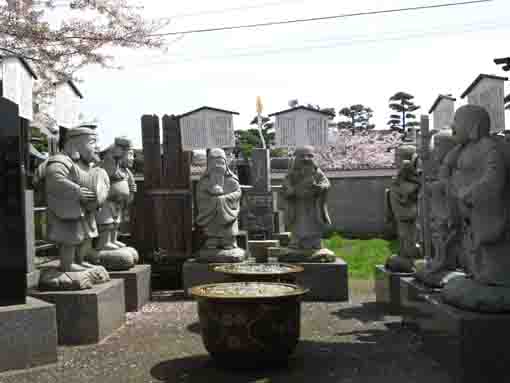
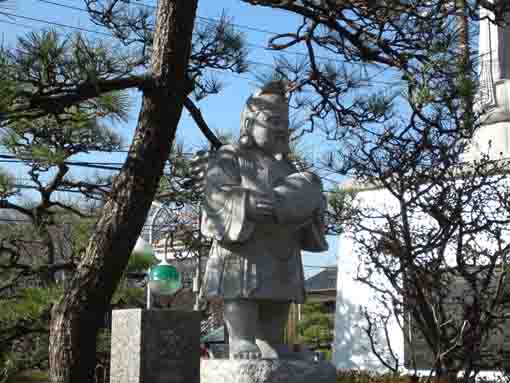
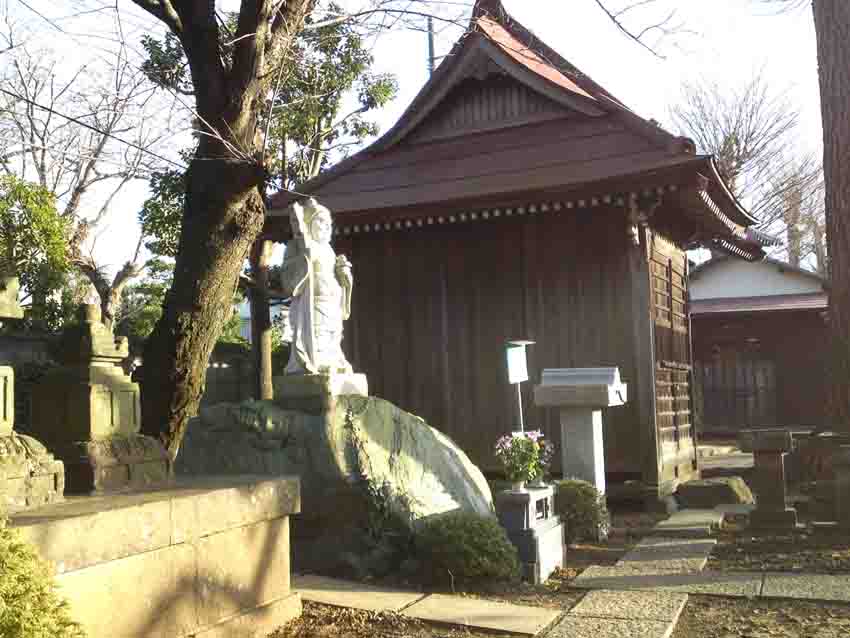
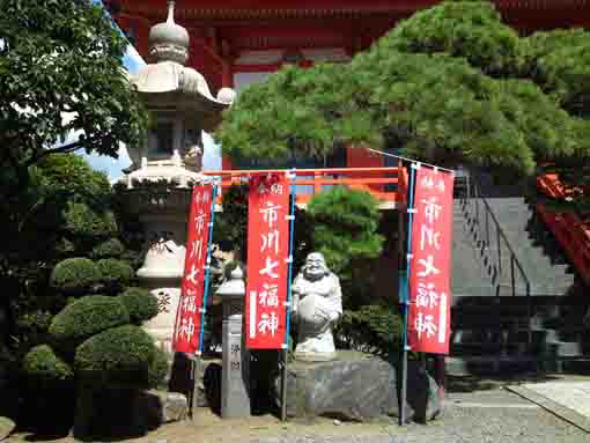
There are courses of 'Visit Shichifukujin (Seven Gods of Good Fortune) ' in each local area throughout Japan. Visit Shichifukujin in Ichiakwa City starts in 2003. Visitors walking on the Shichifukujin could find history and nature in Ichikawa. In the north, there are large orchards of pears spreading in Ono area, Gyotoku area in the south of the city was the eastern gate town of Edo, the temples dedicating those statues of Shichifukujin are dotted in the city. Moreover, those temples having long history and legends belong to Visit Shichifukujin Ichikawa City, for example, Kokubunji Temple built by Gyoki Bosatsu in Nara Period, Nakayama Okunoin standing on the place where the founder Nichiren first preached in, the first nunnery of Nichiren Sect Myoshoji Temple, Myouoji Temple in Teramachi Gyotoku preserve the Shichifukujin in them, so walking on the course of 'Visit Shichifukujin in Ichikawa City' is a very wealthy trip for the visitors intrested in history and culture in Japan. Visit Shichifukujin in Ichikawa City is excitingly enjoyable.
Why don't you visit Shichifukujin in Ichikawa City?
Why don't you visit Shichifukujin in Ichikawa on this movie?
Shichifukujin In Ichikawa City
Shichifukujin (the Seven Gods of Good Fortune) In Ichikawa City
- 1st Bishamonten in Kokubunji Temple (3-20-1 Kokubun)
- 2nd Ebisuten in Shoganji Temple (4-12-3 Miyakubo)
- 3rd Daikokuten in Honshoji Temple (2-919-1 Onomachi)
- 4th Bishamonten in Jokoji Temple (3-1917 Onomachi)
- 5th Fuku Roku Ju and Ju Rojin in Myoshoji Temple (4-2122 Kitakata-cho)
- 6th Bezaiten in Okunoin of Hokekyoji Temple (2-21-1 Wakamiya)
- 7th Hoteison in Anyoji Temple (2-16-35 Koya)
- 8th All Seven Gods in One in Myooji Temple (2-18 Hongyotoku)
Shichifukujin by Bicycle!
The Maps for Visiting Shichifukujin in Ichikawa
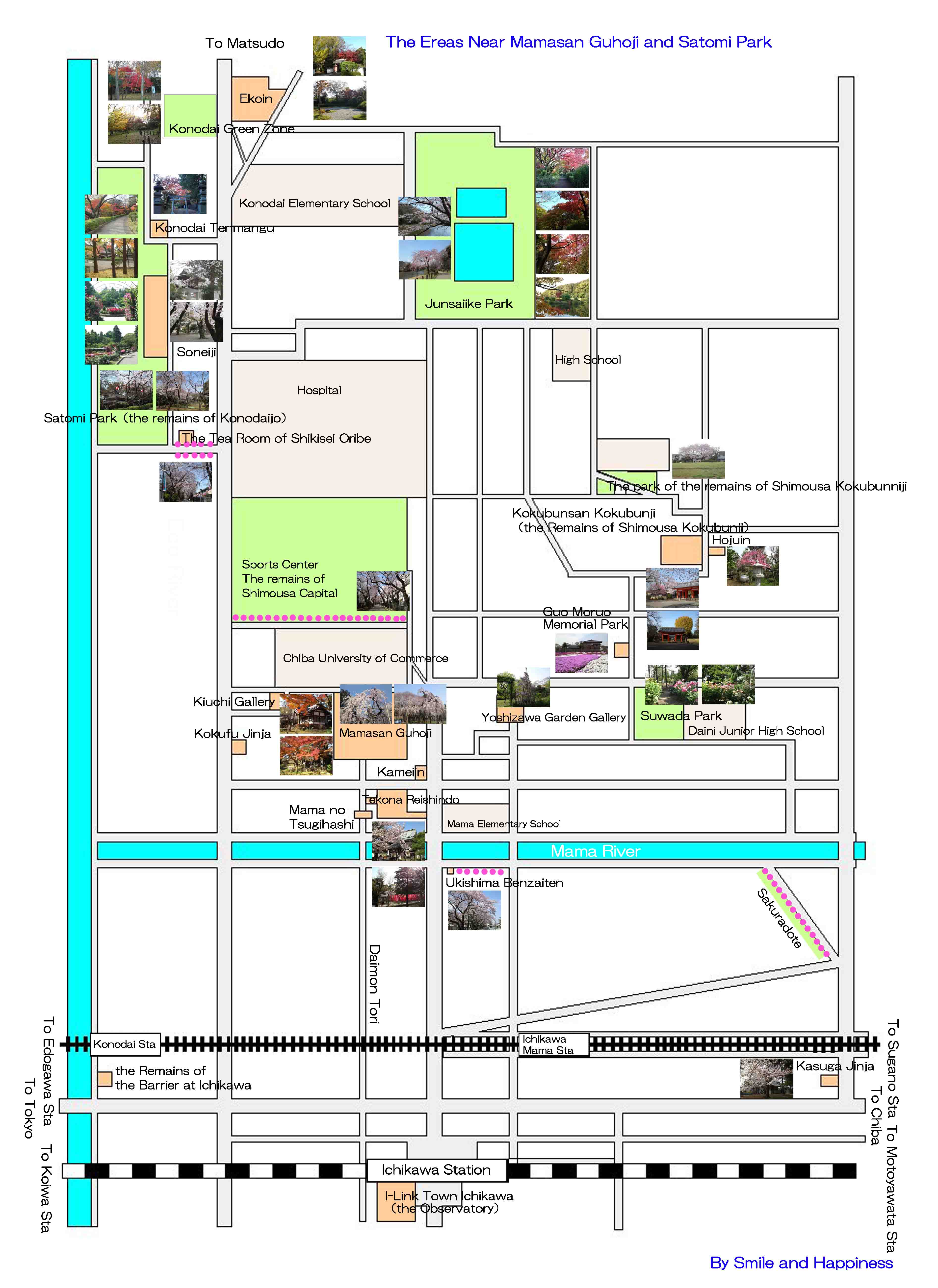
The map to Kokubunsan Kokubuji
PDF of the map around Mamasan Guhoji and Satomi Park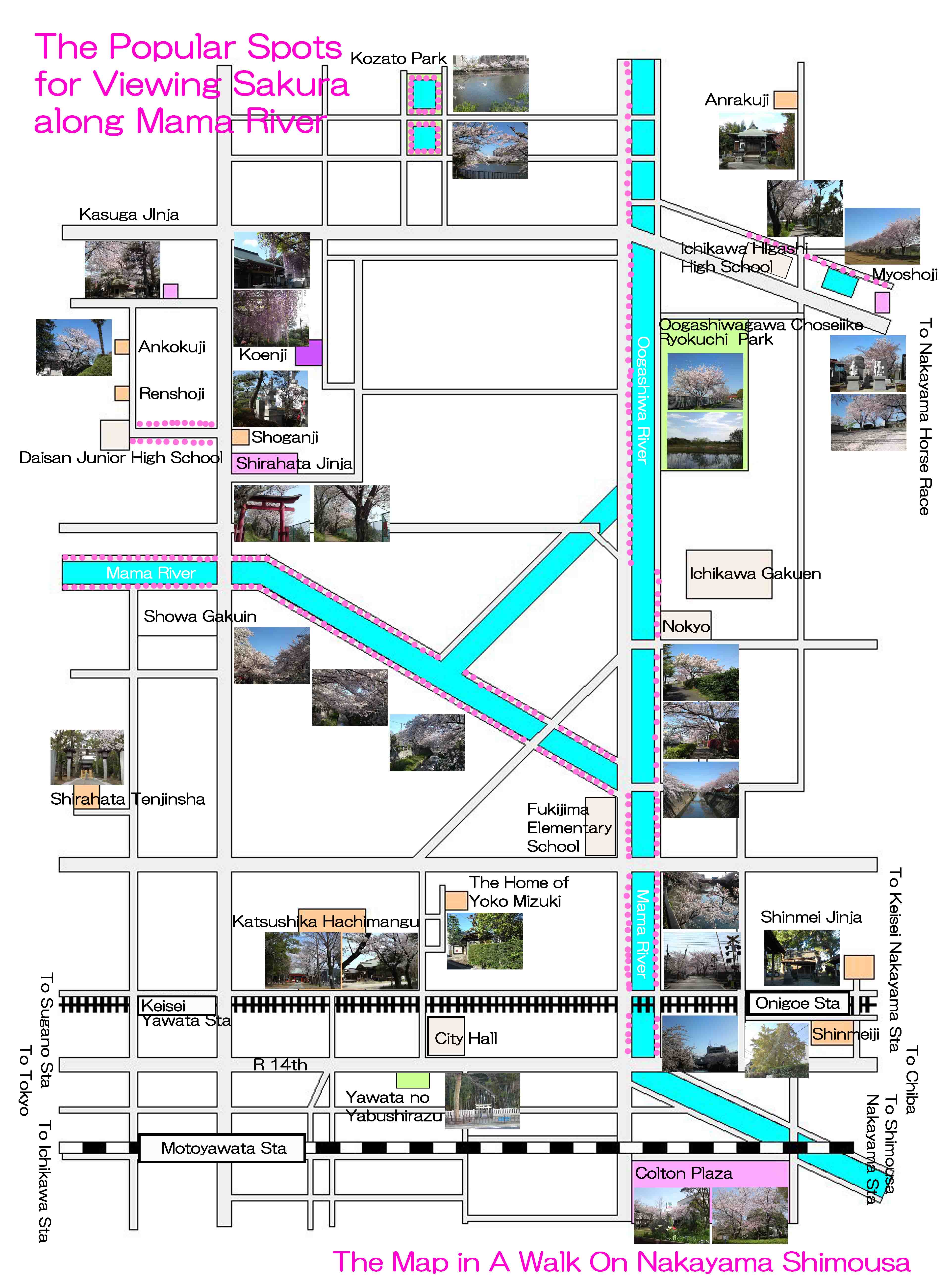
The map to Shoganji and Myoshoji
PDF of the map of the noted spots along Mama River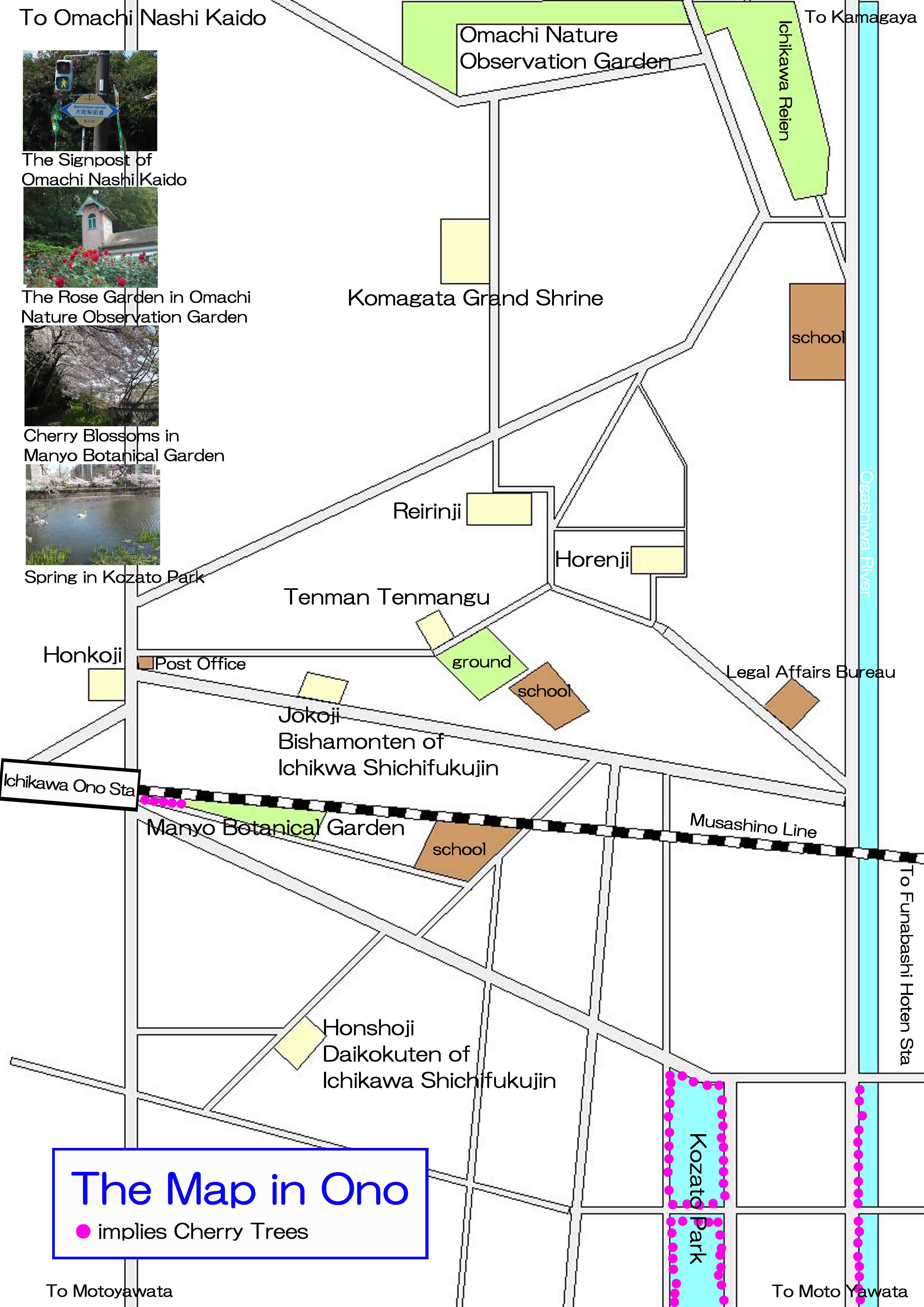
The map to Honshoji and Jokoji
PDF of the map of the landmarks near Ichikawa Ono Station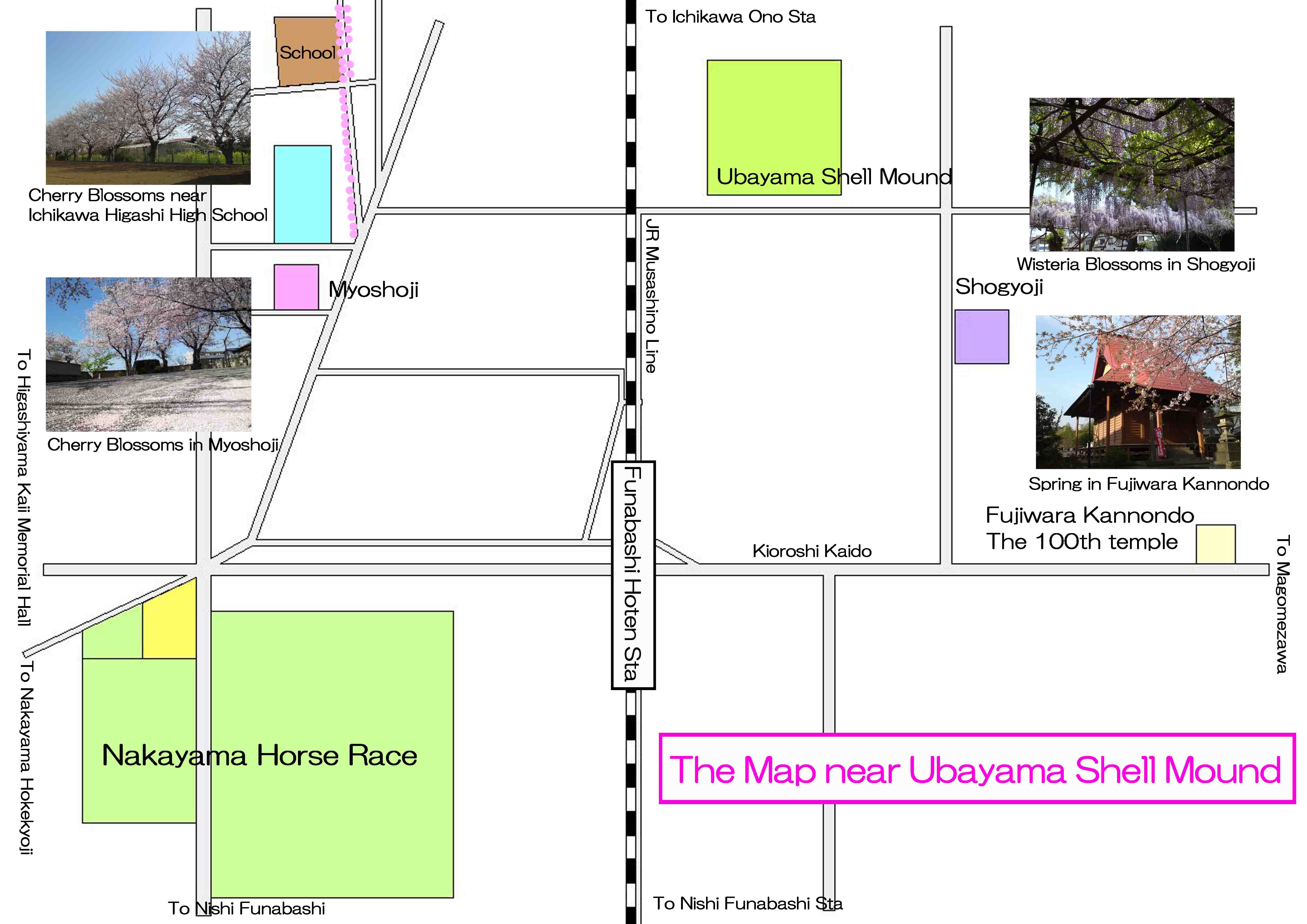
The map to Myoshoji
PDF of the map of the landmarks near Ubayama Shell Mound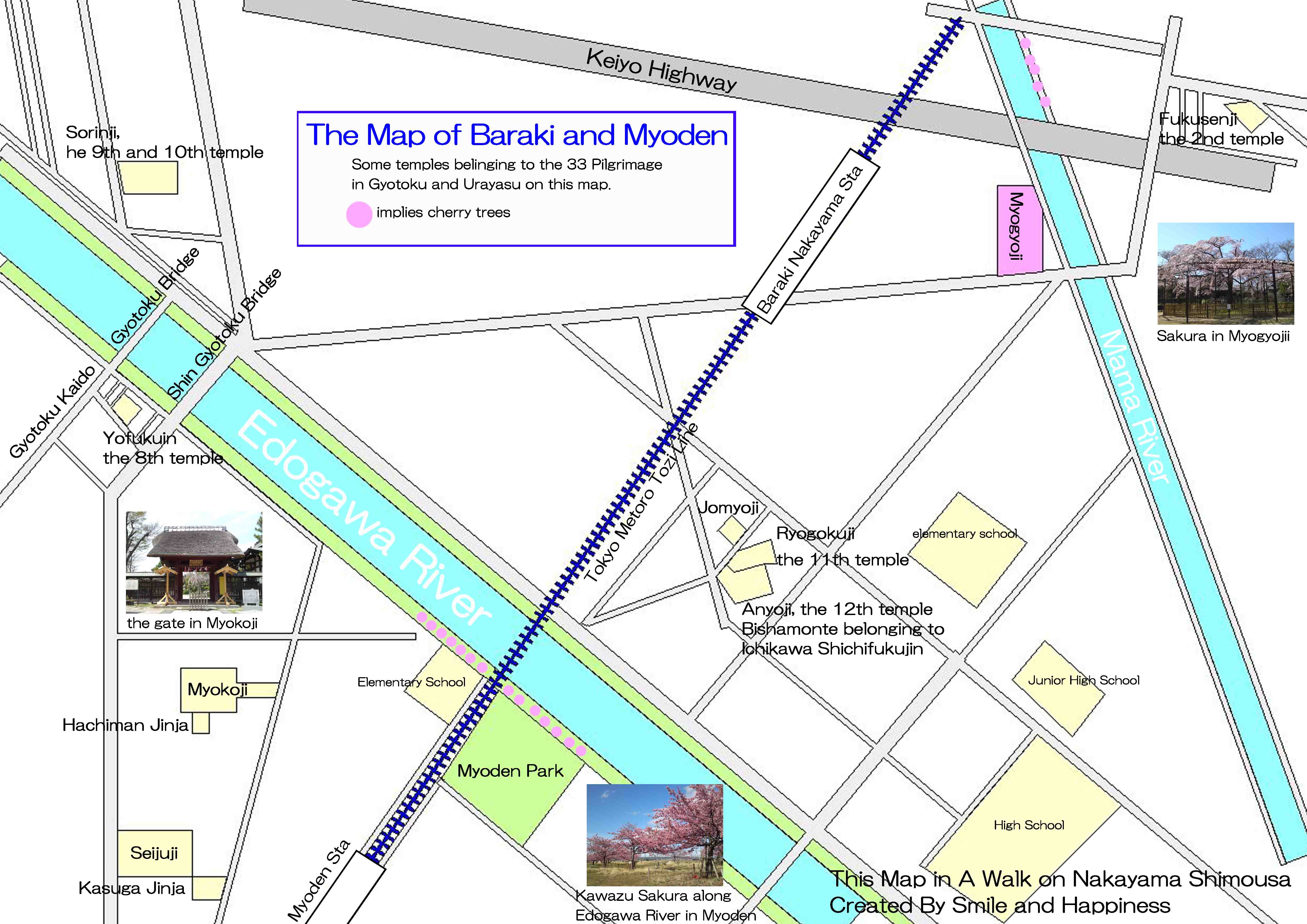
The map to Anrakuji
The Map of the landmarks in Baraki Nakayama and Myoden Areas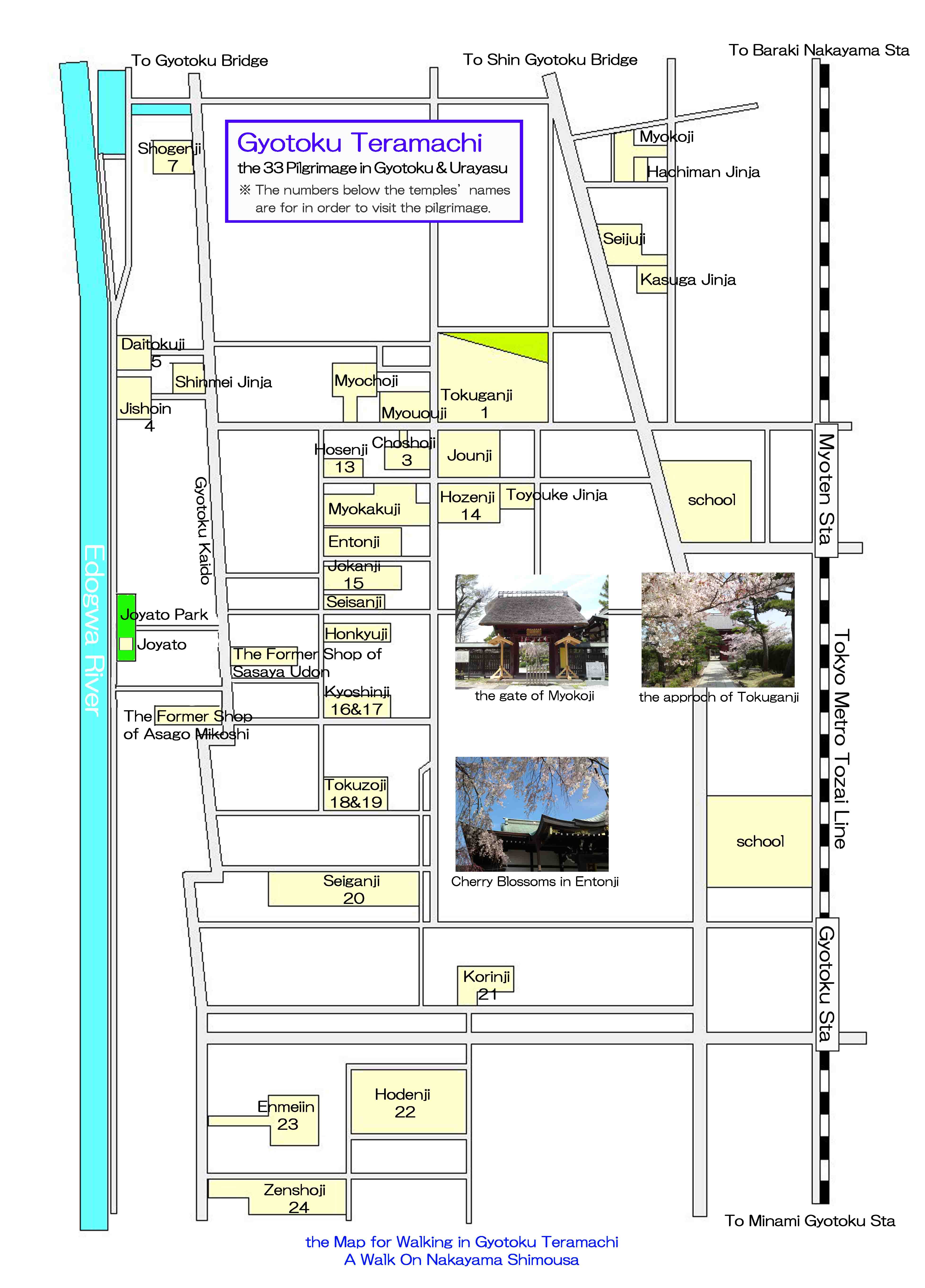
The map to Myououji
PDF of the Map of the landmarks in Gyotoku Teramachi AreasThe History of Shichifukujin
Shichifukuji is the Seven Gods of Good Fortun, Daikokuten, Bishamonten, Ebisuten, Jurojin, Hukurokuju, Benzaiten and Hoteison are members of the gods. Generally, they are painted as on a ship loaded with full of treasures. The worship all gods of Shichifukujin began in late Muromachi period, since the ideas that accumulating wealth would be right conduct spread among the society, Daikokuten, Bishamonten and Benzaiten are the guardian deities of Buddhism and Ebisuten is the god of folk beliefs, those gods were fixed into the holy number '7'. The worship Shichifukujin also spread in the society deeply. Especially merchants faithfully believed as the gods giving virtue, happiness, wealth and prosperity. Moreover, according to the ideas of 'Shichi Nan Soku Metsu (seven misfortunes disappear soon) and Shichi Fuku Soku Shou (seven fortune appear soon), people avoid the seven misfortunes and are given the seven fortunes when they believe Shichifukujin.正国山妙応寺七福神前案内板より
Bishimonten / Vaishravana; the God of Treasure and War
Bishamonten is one of the Seven Deities of Good Fortune in Japan, so he is a very popular god. Bishamonten is a guardian deity called 'Vaisravana' in Sanskrit, and Kubera in Hinduism. Bishamonten is only a god in Shichifukujin who looks like a samurai Busho. His body is yellow, shows anger, wears armors, puts a treasure club in his right hand, puts a pagoda in his left hand and treads on a devil in general. He is one of the Four Devas so the god has another name 'Tamonten' in Buddhism. He becomes the god of treasure and fortune, and lives in the north of Mt.Sumeru (Shumisen) and belongs to Taishakuten to protect the north with Yasha and Rasetsu. Sometimes, he is called Seziten as Bishamonten brings treasures to people. Moreover, Bishamonten is one of the Twelve Devas in esoteric Buddhism. Bishamonten is worshipped as a god of treasure.The statue of Tamonten in the Kondo Hall in Horyuji Temple in Nara is the oldest one, and one in the main hall in Kuramadera Temple in Kyoto and Sekkeiji Temple in Kochi prefecture are famous.
国分山国分寺毘沙門天前案内板より
Ebisuten (the god of wealth)
Ebisuten is only a god born in Japan in the seven gods of good fortune (Shichifukujin). The figure of Ebisuten shows that he was first believed by people living near the sea. Some says Ebisuten is Hikohoodemi no Mikoto who loves fishing, or Kotoshironushi no Mikoto who is a son of Okuninushi (Daikokuten) and he sometimes plays fishing near Mihogaseki or Hiruko no Mikoto who is a son of Izanami no Mikoto and Izanagi no Mikoto.First Ebisuten had been a god who protects fishermen, then he became the god of market as the fishermen sold fish at market. Then, Ebisuten is now believed by many business people as the god of thriving business. As a result, Ebisuten is dedicated throughout Japan as the fortune god gives people good fortune.
如意山所願寺恵比寿天前案内板より
Daikokuten (the god of wealth)
Daikokuten is originally the gods in India who has been worshipped as the god of wealth that he keeps teachings of Buddhism and makes plenty of food. According to Buddhism, Daikokuten is an incarnation of Fukutoku Enman Jizai Bosatsu (Bosatsu has perfect happiness and prosperity in his own.) He smiles and puts a hood on his head, has a sack in his left hand and a small malet in his right hand, and stands on straw rice bags. The small mallet, the sack and the rice bags means the treasure of Fukurokuju.The Founder Nichiren recommended the venerable Nichijo dedicating the Daikokuten. He told 'Actually you spend peaceful time in your everyday life, if you pray for Daikokuten, your wish could fulfill perfectly and your everyday life could be in peace and your future life could be good.' Then, Daikokuten is dedicated as the guardian god of Nichiren Shu. The statue of Daikokuten dedicated in Kaigensan Honshoji Temple was carved by the venerable Nissei, the 41st priest of this temple, at Nichirenshu Aragyodo.
By Kaigensan Honshoji Temple
皆原山本將寺大黒天像脇案内板より
Fuku Roku Ju
Fuku means happiness favored with good human relations, Roku means happiness favored with wealth and Ju means happiness favored with healty long life. Fuku Roku Ju is the god embodied the basic human happiness.Ju Rojin
Ju Rojin is the god who hopes long life, so the god hopes that every one can live out his/her natural life span. Therefore, Ju Rojin protects people's safety and health.It is said that people could gain their healthy bodies and long live without serious disease if they believe Fuku Roku JU and Ju Rojin.
Ryukyosan Myoshoji Temple
龍経山妙正寺壽老人と福・禄・壽石像脇案内板より
Benzaiten
Benzaiten is only a female god in the members of the seven gods of good fortune, and she is originally a goddess in the Indian myth, Sarasvati (called in Sanskrit), she is a wife of Brahma and the goddess of large rivers. 'Sarasvati' is feminin noun, means 'one who has water', so she is the goddess of music, knowledge since it comes from water flowing. Sarasvati is first called Benzaiten in Japan and also introduced as a goddess of knowledge. In Buddhism, Benzaiten appears on 'konkomei saisyo ou kyo' (the Golden Light Sutra of the Most Victorious Kings) at first, and it says that she gives knowledge, wealth and long life to people who preach and listen to the sutra. Howvere, she had often worshipped as a goddess of skills, and she united and mixed with Ichikishimahime-no-mikoto, therefore her statues are generally painted white in her skin with crown on her head and with biwa harp on her arm.After the middle Ages, Benzaiten has been worshipped as the god of property and she has become a member of the seven gods of good fortune. It is told that Benzaiten has the miraculous virtue of knowledge, property, charm and matchmaking.
Benzaiten has been dedicated on the different side of Ugatokushoshin since the ancient times. Therefore Ugatokushoshin in Nakayama Hokekyo-ji Temple might be dedicated on the different side of Benzaiten as it had been built. There are thousands of visitors come to pray it as Benzaiten is famous for fulfillment of their wishes.
中山奥之院弁財天前案内板より
Hoteison
Hoteison is a god with a potbelly who is one of Shichifukujin (Seven Gods of Good Fortune). He really existed in Tangu Dynasty in China and he was a Buddhist priest belonging to Zen Sect. His name was Keishi, pseudonym was Cho Teishi. He always looked very happy and had large stomach. And Hoteison was famous for a trainee monk travelling around with his fabric bag on his shoulder. He has much treasure in his bag, so people believe that people in a certain area where Hoteison would visit could get good fortunes. Hoteison is considered to be an incarnation of Miroku Bosatsu who appears to save people in the end of the world. In Japan, the belief of Hoteison spread in Muromachi period as a member of Shichifukujin by the imported Zen paintings from China. Hoteison is the god of bringing good fortune, childbirth and match making.海岸山高谷院安養寺布袋尊造前案内板より
出典・抜粋・引用および参考
正国山妙応寺七福神前案内板
国分山国分寺毘沙門天前案内板
如意山所願寺恵比寿天前案内板
中山奥之院弁財天前案内板
海岸山高谷院安養寺布袋尊造前案内板
市川市ホームページ
- 広告 Advertisement -
